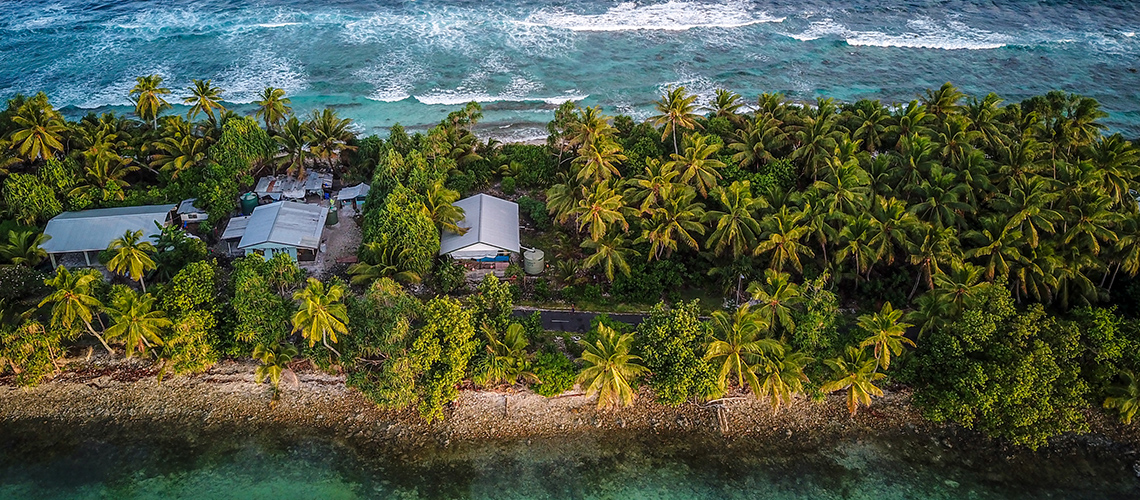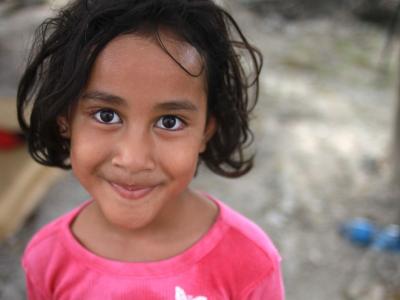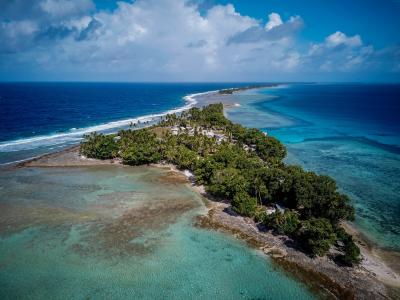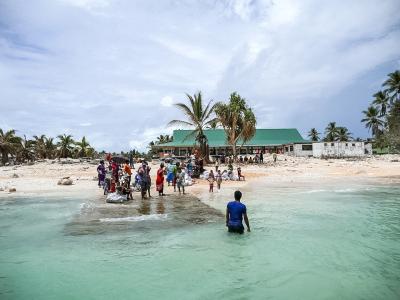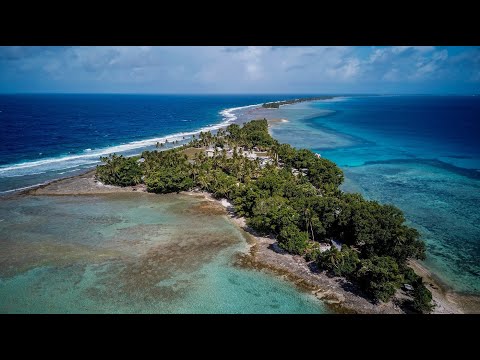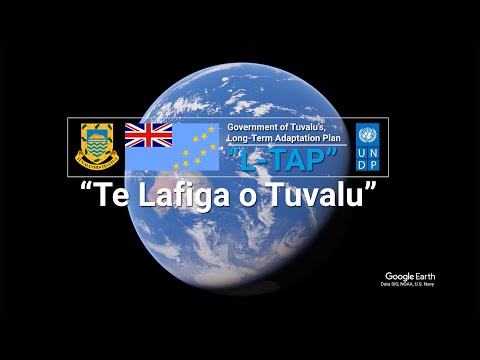Photo:
Under the Tuvalu Coastal Adaptation Project (TCAP) the Government of Tuvalu is implementing measures to reduce the impacts of climate-induced sea level rise and intensifying storm events on key infrastructure.
Building on existing initiatives, and using a range of measures for coastal protection - including eco-system initiatives, beach nourishment, concrete and rock revetments, and sea walls - the project focuses on building coastal resilience in three of Tuvalu’s nine inhabited islands. A total of 2,780m of high-value vulnerable coastline, with houses, schools and hospitals, will be protected from increasingly intensive wave action and coastal inundation.
Building national capacity for resilient coastal management is also a key focus of the seven-year project, set to be completed in 2025.
It is expected that the project will help to catalyse additional coastal adaptation finance from other donors.
Visit the project website https://tcap.tv
- Image
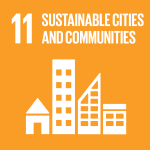
- Image

- Image
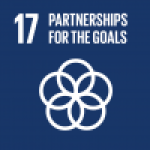
Expected outcomes
Output 1: Strengthening of institutions, human resources, awareness and knowledge for resilient coastal management.
Output 2: Vulnerability of key coastal infrastructure including homes, schools, hospitals and other assets is reduced against wave induced damage.
Output 3: A sustainable financing mechanism established for long-term adaptation efforts.
Project details
Levels of intervention
- Community
- National
Source of funds
- Green Climate Fund
Key implementers
- National Governments
- United Nations Development Programme (UNDP)
Funding amounts
Project partners
- Climate Change Policy Unit, The Office of the Prime Minister, Tuvalu
- United Nations Development Programme (UNDP)
- Green Climate Fund
Project dates
Introduction
Under the Tuvalu Coastal Adaptation Project (TCAP) the Government of Tuvalu is implementing measures to reduce the impacts of climate-induced sea level rise and intensifying storm events on key infrastructure.
Building on existing initiatives, and using a range of measures for coastal protection - including eco-system initiatives, beach nourishment, concrete and rock revetments, and sea walls - the project focuses on building coastal resilience in three of Tuvalu’s nine inhabited islands. A total of 2,780m of high-value vulnerable coastline, with houses, schools and hospitals, will be protected from increasingly intensive wave action and coastal inundation.
Building national capacity for resilient coastal management is also a key focus of the seven-year project, set to be completed in 2025.
It is expected that the project will help to catalyse additional coastal adaptation finance from other donors.
Visit the project website https://tcap.tv
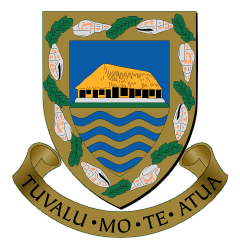
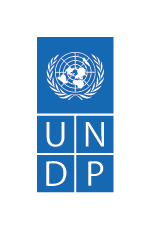

Project details
Tuvalu is the fourth smallest nation in the world, comprising nine inhabited islands with a population of 10,640. With an average elevation of only 1.83 meters, it is one of the most vulnerable countries in the world to the impacts of climate change. The combination of two manifestations of climate change – continually intensifying cyclone events and sea level rise – threaten to have dire impacts on Tuvalu. In 2015 Cyclone Pam displaced 45% of the population. The purpose of this project is to reduce the impact of increasingly intensive wave activity, through the compounding effects of sea-level rise and intensifying storm events, that is amplifying coastal inundation and erosion. It is evident and well accepted that the effects of climate change will only worsen coastal inundation and erosion in Tuvalu. This project will increase the coverage of coastal protection from the baseline 570m to 2,780m benefiting nearly 29% of the entire population. Investments on coastal protection are directed at coastlines in three islands (Funafuti, Nanumea and Nanumaga) along areas that have a high concentration of houses, schools, hospitals and other social and economic assets (henceforth referred to as “high-value” coastline).
Despite the extreme level of vulnerability, Tuvalu currently does not have a single engineered coastal protection infrastructure project that is designed to withstand current and future impacts of sea-level rise and intensifying tropical storms. The only exceptions are two interventions that are currently being designed for a length of 570 m in Funafuti and Nukufetau. The combined factors of high upfront investments required for coastal protection, the public good and non-revenue nature of the required solutions, and the inability of the Government to service loans, have permitted the Government and the community to implement the recognized solutions only at a slow pace and in a highly fragmented manner in the past. Because available resources are generally far smaller than what is required for implementing appropriate response measures, the past initiatives have often resorted to community-scale interventions that hardly withstand the current wave energy, let alone integrating climate change risks into the design. Without support, this sub-optimal practice is likely to continue for the foreseeable future. This project is proposed so that Tuvalu can, finally, take comprehensive and systemic steps to manage coastal inundation risks.
- Community
- National
- National Governments
- United Nations Development Programme (UNDP)
The project will benefit about 3,100 people directly and about 3,499 indirect beneficiaries. This is about 62% of the population of Tuvalu. The project can potentially reduce annual losses (including statistical value of life) worth up to up to $667,000 over 40-year time period (period of analysis for the economic analysis)
- Climate Change Policy Unit, The Office of the Prime Minister, Tuvalu
- United Nations Development Programme (UNDP)
- Green Climate Fund
News
Funding Proposal approved by Green Climate Fund Board: 30 June 2016
Local Project Appraisal Committee meeting (LPAC): 15 February 2017
Funded Activity Agreement (FAA) effectiveness reached: 7 June 2017
Project Document signature between UNDP and Government: 14 June 2017
First disbursement received: 11 July 2017
Launch and inception workshop with key stakeholders: 30 August 2017
'Advanced Topographic and Bathymetric Survey to Support Tuvalu’s Adaptation Efforts', UNDP Pacific, April 24 2019. Detailed and accurate information on the relationship between land height and sea level will be made available for the first time in Tuvalu as the Tuvalu Coastal Adaptation Project (TCAP), funded by the Green Climate Fund (and implemented by the United Nations Development Programme, has signed a contract with Fugro to undertake an airborne LIDAR survey across Tuvalu’s nine atoll islands in the coming month. LIDAR (Light Detection and Ranging) is a remote sensing method that uses light in the form of a pulsed laser to measure ranges to the earth. See also Fugro release here.
SPC and UNDP partner to support coastal adaptation in Tuvalu - 20th December 2018
'Youths are the future of climate resilience', Fiji Times, February 11, 2018. As well as addressing the impacts and causes of climate change, we need to look to the solutions. How are communities going to, not just adapt, but build their resilience? What does resilience even mean? And how do we do it? One of the keys to building it, and addressing the impacts of climate change, is ensuring countries themselves are leading in both developing and implementing the solutions.
'Tuvalu scholarships awarded (under Tuvalu Coastal Adaptation Project)', Radio New Zealand, February 8, 2018. Two students from Tuvalu have been granted university scholarships under the Tuvalu Coastal Adaptation Project. Investing in young people is among the country's environmental adaptation plans. Moeo Finauga said the students would be offered jobs on the project once they had completed their studies.
'Shoring up Tuvalu's Climate Resilience', UNDP Asia Pacific blog, August 30 2017. As the Tuvalu Coastal Adapation Project launches, celebration in Funafuti. Regional Technical Advisor, Yusuke Taishi, shares his thoughts on the occasion.
'Tuvalu’s climate resilience shored up with launch of US$38.9 million adaptation project', UNDP Pacific, August 30, 2017. The Prime Minister of Tuvalu along with the United Nations Development Programme (UNDP) officially launch the Tuvalu Coastal Adaptation Project (TCAP) marking the start of an ambitious, large-scale push to protect the Pacific island nation from climate change.
'Tuvalu signs financing agreement to access Climate Fund' - Tuvalu Government, July 5 2017. Tuvalu has become the first Pacific Island country to sign the Financing Framework Agreement to access funds for coastal protection activities from the Green Climate Fund. The elated Prime Minister said the financing agreement, worth almost US$39 million will fund the Tuvalu Coastal Adaptation Project on the three islands of Nanumea, Nanumaga and Funafuti. The process will begin in August with a workshop where Tuvalu Government and UNDP will coordinate logistics.
'Government of Tuvalu launches new coastal protection project to bolster resilience to climate change' - UNDP, July 6, 2017. A signing ceremony took place in Suva on 14 June between the Tuvalu Prime Minister Enele Sopoaga and UNDP Resident Representative Osnat Lubrani. “The protection of our country’s vulnerable coastlines is an urgent priority of the Government of Tuvalu,” said the Prime Minister of Tuvalu, Hon. Enele Sosene Sopoaga.
'Green Climate Fund finance allocation builds Tuvalu’s resilience' - Green Climate Fund, July 3, 2017. The Green Climate Fund is transferring funds to help strengthen the island nation of Tuvalu against the double climate threats of rising sea levels and destructive cyclones. GCF is sending the first USD 2 million tranche of its USD 36 million contribution.
Tuvalu GCF-funded coastal adaptation project to protect 1/3 of country
Key results & output
Output 1: Strengthening of institutions, human resources, awareness and knowledge for resilient coastal management.
Technical capacity, knowledge and awareness strengthened for monitoring, protection and maintenance of coastal protection infrastructure.
The jurisdiction of coastal protection is shared across the Department of Lands and Survey (DoLS), Public Works Department (PWD) and Department of Environment (DoE). However, none of these departments currently have the technical capacity to monitor the dynamic processes of coastal change over time nor the capacity to design potential coastal interventions. Nor is there sufficient capacity within the Climate Change Policy Unit (CCPU) to coordinate the work of these departments for effective coastal protection. Due to this limitation, the Government is not able to carry out vulnerability assessments, site assessments and coastal design, make informed decisions about pragmatic solutions for coastal protection, and identify potential funding sources for implementation. Instead, they generally have to wait for a donor, often with particular areas of financing priority, to approach them. This lack of ability to carry out a preliminary technical assessment contributes to an increasing sense that the issue is out of their control and eventually to limited ownership. Further, although the CCPU was newly established in 2015 to coordinate government’s actions for climate change adaptation and mitigation, medium- to long-term capacity building efforts are needed in the technical areas of climate change, coordination, project design and management, financial management, knowledge management and reporting.
Long-term national human resource capacity and awareness enhanced for sustainable coastal protection
In the specific context of Tuvalu, the capacity building support conventionally delivered in donor-supported projects has been insufficient to establish a foundation for sustainability. This is because typically the capacity building support in these projects is exclusively targeting the existing government staff, which is small in number, and the progress is immediately undone if the staff members leave the government system. This approach to capacity building represents numerous missed opportunities for transforming the country. Climate change adaptation is defined by UNFCCC as a series of “adjustments in ecological, social, or economic systems in response to actual or expected climatic stimuli and their effects or impacts” and by nature, it is an iterative, long-term process. Adaptation efforts in SIDS like Tuvalu must embrace, in their core principle, a strategy to build capacity of the entire country that goes well beyond that of the government system.
Output 2: Vulnerability of key coastal infrastructure including homes, schools, hospitals and other assets is reduced against wave induced damage.
Coastal protection design, site-specific assessments and ESIA undertaken in all islands in a participatory manner
A detailed, participatory design and site-specific assessment will be carried out in all the islands in Tuvalu. This process is needed not only to make final adjustments in the design of the coastal protection measures (such as the angle of the structure and protection of the toe of the structure) to maximize the effectiveness and longevity of the structure for the three targeted islands, but also to equip the other, non-targeted islands, with the necessary information for attracting donor resources in the future, including from GCF. The multi-stakeholder, gender-responsive planning and design process will take place to ensure that beneficiaries are fully informed and are able to contribute to the detail design and functionality of the coastal protection measures in each of the islands. The process will, for example, look into how the target community (men, women, youth, and elderly) interacts with the ocean and coastline, which is an important design element of coastal protection infrastructure. The assessment will result in a set of adaptation options, detailed technical drawings, bill of quantity, tender documents and detailed costing of the interventions. As described earlier, this process will be used as an opportunity to provide hands-on trainings for government staff from the DLS, PWD and DoE.
Resources will be used to put in place a robust coastal protection infrastructure along 2,210m of vulnerable coastlines of Funafuti, Nanumea and Nanumaga to defend high value assets of the targeted islands. This translates to targeting nearly 28% of the high value zone of the country, which currently has no protective measures. Also this represents 10% of all vulnerable coastlines in the country. The design criteria are set such that the design will reflect the projected sea level rise and notional 200-year return period storm surge events. Geo-textile container revetments in Nanumea and Nanumaga will have minimum design life of 25 years; but, with the appropriate selection of vandal resistant bags for the top layer walls and, training of PWD and community members for monitoring and simple repair, the life expectancy is expected to be longer.
Output 3: A sustainable financing mechanism established for long-term adaptation efforts.
All Island Strategic Plans and annual budgets integrate island-specific climate risks through gender sensitive, participatory processes
Successful climate risk mainstreaming into ISPs and effective use of available domestic financing will facilitate island-led actions, enhance planned and autonomous adaptation, and ultimately, increase resilience at the island level. In the context of coastal interventions envisaged in the GCF project, a strengthened ISP process will improve longer-term impact and replication potential of the GCF investments as domestic resources, allocated through ISPs, are expected to be used to maintain the GCF investments and to expand the coastal protection coverage. For the expansion of coastal protection measures beyond donor-assisted projects, lower-cost ecosystem-based approaches are a more realistic option given the limited available finance domestically. This activity will strengthen the critical foundation to facilitate this process.
Capacity of Kaupules, Falekaupules and community members strengthened for monitoring coastal adaptation investments
This project will also be used to strengthen the capacity of both outer island administrations and community members for monitoring, reporting and verifying the progress of adaptation investments as an integral element of ISP support. Due to the special geographical condition of Tuvalu where islands are several days away from the central government, upward accountability to the central government and downward accountability to citizens can easily be diluted among kaupules. Thus, nurturing the sense of oversight among community members becomes critical for ensuring transparent, sustainable, demand-driven service delivery. Support to ISP formulation, budgeting and execution, the focus of Activity 3.1, and support for community members for an independent oversight of the ISP process, the focus of Activity 3.2, must go hand-in-hand. At the same time, outer island administrations also need to develop their capacity to report the use of resources and progress of investments to their constituents.
Reports & publications
Reports and Publications by country teams
Assessments and Background Documents
Document
Newsletter
Board Meeting Reports
Communications Products
PIFs
Videos & multimedia
Monitoring & evaluation
Project Update, October 2018
- With the concept designs already generated for the Nanumea, Nanumaga and Fogafale shorelines, the next step is to develop a detailed design with the help of an engineer. This will then be followed by a full assessment of hazards, environmental and social impact assessment, and coastal risk assessment before the implementation of innovative shoreline intervention measures appropriate to the location’s topographical and bathymetrical conditions.
- Under the TCAP’s scholarship programme, two Tuvaluan students, Palakua Sakaio and Tanu Sumeo have, in July of this year, commenced their studies at the University of Canterbury in Christchurch, New Zealand and the University of South Australia in Adelaide.
- The project is in the process of identifying the specific training and capacity needs of different Government agencies in Tuvalu with regards to their ability to address coastal adaptation and to ensure that the project meets the government’s requirements and there is maximum opportunity for capacity development during its implementation. This exercise will feed into a Strategy and Action Plan for Government Capacity Development which will be carried forward during the lifetime of the project. The technical capacities assessed are basically knowledge-based with direct links to the project. These include areas such as coastal hazards, coastal processes, coastal institutional arrangements, coastal interventions, project planning, coastal geospatial data, vulnerability assessment, concept designs, environmental & social impact assessments, risk assessment, coastal intervention construction, monitoring & maintenance, and adaptive management.
- To improve the ability of the Kaupules’ to address climate change and sea level rise risks and coastal adaptation, an operational manual has been developed to channel funds under the performance-based grants system to the Island’s Kaupules.
Newsfeed
Contacts
- UNDPMr Yusuke Taishi

